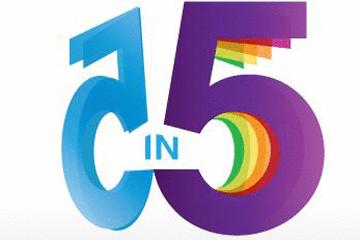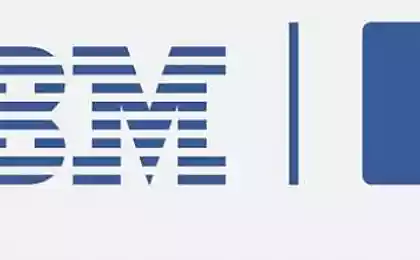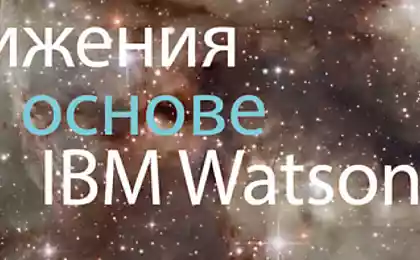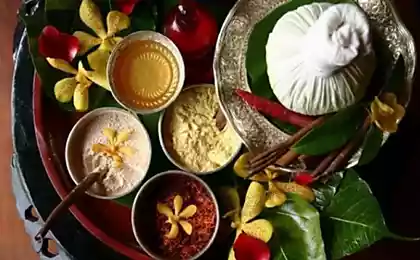475
After 5 years, your touch screen will mimic the texture
Predicting the future is a risky task for even the most powerful of the brain (remember, we promised flying cars by this time). But that didn't stop the best minds in IBM, and they created a list called "5 in 5" that contains descriptions of the five innovations that will change our lives within next five years.
The company has recently published his research, and found that all of them are definitely based on the human factor. Every innovation related to computers and technology, exploring the new frontiers against five human senses.
The sense of touch. Imagine you can try to touch the cashmere before you buy it in online store. This day may not be far off. Assistant to head of IBM on the issues of retail Analytics Robin Schwartz predicts that a maximum of five years, touchscreens will use a combination of vibrations at small distances and changes in temperature for accurate transmission of tactile sensations of the subject, you see. "It is already possible to recreate a sense of texture with the help of vibration, — says the specialist. But these vibrations are not yet included in the dictionary of textures corresponding to a physical experience". Yet.

Vision. Currently the computers can "see" pictures as pixels, not as a way passed these pixels together. Senior Manager of the company on the organization of intellectual information John Smith I'm sure that soon, personal computers will gain vision. This will help them in machine learning and thousands of repetitive examples. Once that happens, the speed of computerized image recognition will increase significantly.
Hearing. The lead inventor of the company Dmitry Kanevsky believes that within five years, a huge number of computerized sensors will help people long to know about the impending environmental disaster. Help them in this light audio cues, such as tense creaking of the trees or bridges or inaudible to humans friction of tectonic plates under the earth. Computers can be taught the meaning of the changes in the sound, and eventually this will lead to the creation of the radio nurse, accurately recognizing when the child is crying due to hunger, prorezalsya teeth or, well, dirty diapers.
Taste. "But, mom, I know that I don't like the taste of pepper! I don't need to even try!" It's a familiar whimper shudder parents around the world. But if the researcher IBM's Dr. Lav Varshni not mistaken, this well-known excuse a maximum of five years will become a scientific truth. Varshni sure that the computers again with the help of machine learning will be able to "taste" food (or rather the chemical elements, which are included in all products) to identify and create recipes for optimum taste and nutrition.

The sense of smell. Specialist doctor Henrik Haman predicts that in five years, smartphones (and other tech gadgets) will be able to analyze thousands of molecules every time you exhaled to recognize that you are ill long before the onset of the disease. The flu is a great example, but Haman believes that technology can work in relation to problems with the liver and kidneys, diabetes and tuberculosis, as well as other ailments. But olfactory technology will be particularly useful if you tell me that you should use a mouth freshener before you knock on the apartment door of the beloved.
Source: /users/104
The company has recently published his research, and found that all of them are definitely based on the human factor. Every innovation related to computers and technology, exploring the new frontiers against five human senses.
The sense of touch. Imagine you can try to touch the cashmere before you buy it in online store. This day may not be far off. Assistant to head of IBM on the issues of retail Analytics Robin Schwartz predicts that a maximum of five years, touchscreens will use a combination of vibrations at small distances and changes in temperature for accurate transmission of tactile sensations of the subject, you see. "It is already possible to recreate a sense of texture with the help of vibration, — says the specialist. But these vibrations are not yet included in the dictionary of textures corresponding to a physical experience". Yet.

Vision. Currently the computers can "see" pictures as pixels, not as a way passed these pixels together. Senior Manager of the company on the organization of intellectual information John Smith I'm sure that soon, personal computers will gain vision. This will help them in machine learning and thousands of repetitive examples. Once that happens, the speed of computerized image recognition will increase significantly.
Hearing. The lead inventor of the company Dmitry Kanevsky believes that within five years, a huge number of computerized sensors will help people long to know about the impending environmental disaster. Help them in this light audio cues, such as tense creaking of the trees or bridges or inaudible to humans friction of tectonic plates under the earth. Computers can be taught the meaning of the changes in the sound, and eventually this will lead to the creation of the radio nurse, accurately recognizing when the child is crying due to hunger, prorezalsya teeth or, well, dirty diapers.
Taste. "But, mom, I know that I don't like the taste of pepper! I don't need to even try!" It's a familiar whimper shudder parents around the world. But if the researcher IBM's Dr. Lav Varshni not mistaken, this well-known excuse a maximum of five years will become a scientific truth. Varshni sure that the computers again with the help of machine learning will be able to "taste" food (or rather the chemical elements, which are included in all products) to identify and create recipes for optimum taste and nutrition.

The sense of smell. Specialist doctor Henrik Haman predicts that in five years, smartphones (and other tech gadgets) will be able to analyze thousands of molecules every time you exhaled to recognize that you are ill long before the onset of the disease. The flu is a great example, but Haman believes that technology can work in relation to problems with the liver and kidneys, diabetes and tuberculosis, as well as other ailments. But olfactory technology will be particularly useful if you tell me that you should use a mouth freshener before you knock on the apartment door of the beloved.
Source: /users/104
Authentic brickwork of the facade in the Indian building SAHRDC
Art-project " the stars of postcards," Postcard Series from Amir Zainorin



















